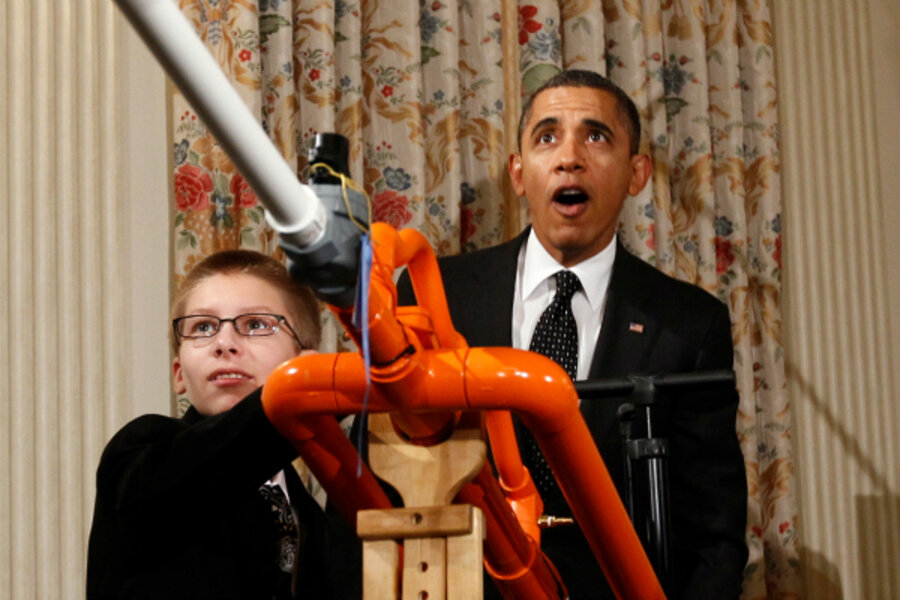The US economy's hidden STEM jobs
President Obama’s 2014 budget proposal invests $3.1 billion to train Americans for high-tech jobs, a 6 percent increase over two years prior.
The emphasis on so-called STEM education (science, technology, engineering, and mathematics) makes sense: In 2011, 26 million US jobs required in-depth knowledge in at least one of the STEM fields. That’s 20 percent of the workforce. And STEM-trained workers account for even more of the federal government’s workforce: 29 percent and growing.
At the same time that high unemployment lingers – ticking up again in May to 7.6 percent – demand for STEM-trained workers is rising.
Now a new report on STEM education gives policymakers reason to question some old assumptions and gives hope to more young Americans that they can be part of this new specialized workforce.
There are really two STEM economies, says a new report from the Brookings Institution: The first is the one most people think of, highly educated workers who hold graduate degrees in scientific and technical fields. But the Washington-based think tank found that the evolving US economy is also opening up good jobs for another group.
“Half of all STEM jobs are available to workers without a four-year college degree, and these jobs pay $53,000 on average – a wage 10 percent higher than jobs with similar educational requirements,” says the report, titled “The Hidden STEM Economy.” The jobs are in fields like manufacturing, health care, and construction, and these workers without four-year or higher college degrees are found installing, maintaining, and repairing high-tech equipment – jobs that make up 12 percent of all STEM jobs.
These "other" STEM workers may not be inventing new technologies, but they are and will be indispensable in keeping them running.
That’s not to say that a high school diploma will suffice. Community colleges and technical schools play a vital role in this STEM training. Yet, according to the report, only one-fifth of federal government spending on STEM education and training goes toward these sub-bachelor’s degree programs.
Instead of disappearing, manufacturing and construction jobs are going to require higher technical skills – but a bachelor's or higher degree usually won’t be necessary.
“The overemphasis on four-year and higher degrees as the only route to a STEM career has neglected cheaper and more widely available pathways through community colleges and even technical high schools,” the report goes on to say. It calls jobs that require less than a bachelor’s degree “a hidden and unheralded STEM economy.”
The federal government has always taken an interest in promoting technical and scientific advancement. The US Constitution gave Congress power to “promote the progress of science and useful arts.” In 1945, Vannevar Bush, the first science adviser to a US president, called for the founding of the National Science Foundation, which has become a staunch supporter of science education.
During his term of office President George W. Bush inaugurated the American Competitiveness Initiative, an effort to boost STEM education and the number of working scientists. Mr. Obama has put great emphasis on K-12 STEM education, including setting a goal of preparing and recruiting 100,000 high-quality K-12 STEM teachers.
But, as this report suggests, policymakers should now look harder at the promise of educational opportunities that lie between K-12 and advanced college degrees. They can play an important role in creating a workforce with the skills to participate in and expand the high-tech economy of the future.





